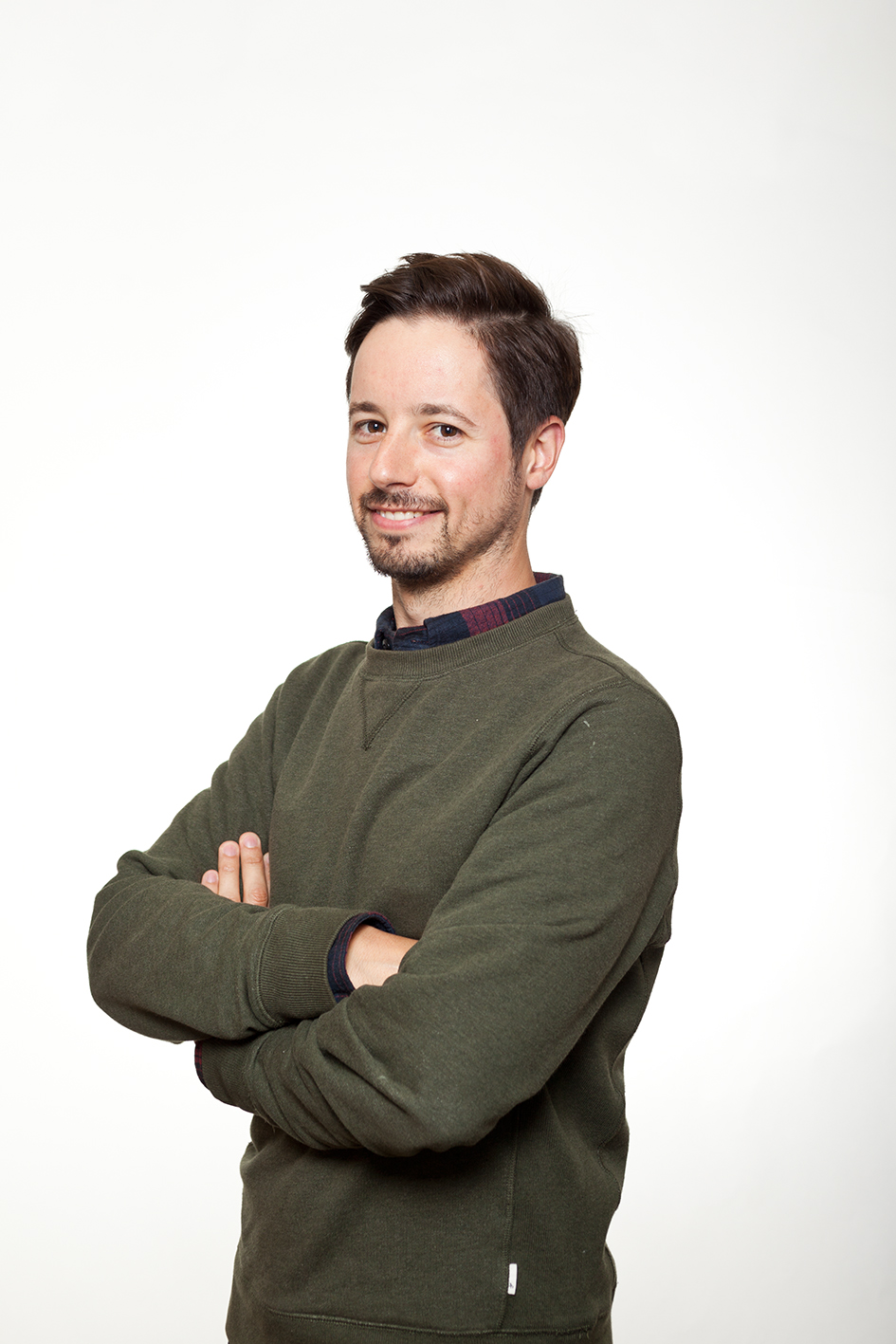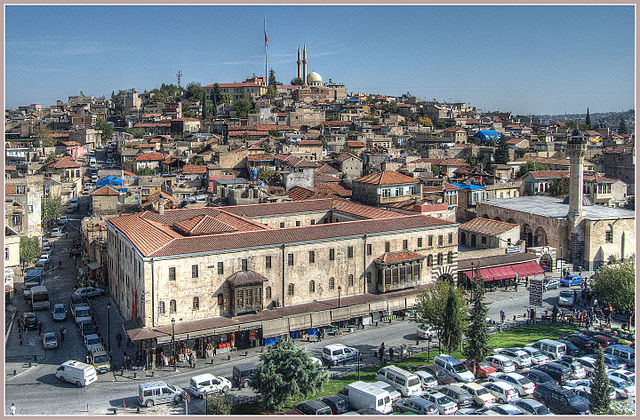The do’s and don’ts of urban journalism. Tips from the editor of Guardian Cities
Edited on
05 September 2019Chris Michael shares his advice on how to write compelling city stories.

Since its launch in 2014, Guardian Cities has quickly established itself as one of the most well-known and respected urban journalism websites in the English-speaking world. This dynamic portal, which publishes reportage, photojournalism, illustrations and videos from across the globe, is one of very few spaces in the mainstream media dedicated to documenting how cities are transforming for the better and worse. We talked to Chris Michael, the site’s current editor, about his editorial process, the role of journalists in an urban environment, and some of his favourite stories from the past few months.
Jamie Mackay (JM) - What grabs your attention when someone sends in a pitch? What does a good story idea look like?
 Chris Michael (CM) - We’re always looking for something that would sit within the context of The Guardian as a newspaper. There are loads of things that happen in cities that we’ve decided maybe rightly or wrongly don’t qualify. We tend to avoid cultural developments per se, the kind of things that maybe Time Out or the travel sites would already cover. Our main focus is on reported journalism, because we’re lucky enough to have a budget to do that, and that’s where we can add value. We report from around the world with stories about how cities are changing.
Chris Michael (CM) - We’re always looking for something that would sit within the context of The Guardian as a newspaper. There are loads of things that happen in cities that we’ve decided maybe rightly or wrongly don’t qualify. We tend to avoid cultural developments per se, the kind of things that maybe Time Out or the travel sites would already cover. Our main focus is on reported journalism, because we’re lucky enough to have a budget to do that, and that’s where we can add value. We report from around the world with stories about how cities are changing.
They key thing is that pitches should be for stories and not just issues. Gentrification is an issue. The Brooklyn bar that preserves bullet holes in the walls as a sort of sales technique to get hipsters to come and drink there is a story about gentrification. That’s the main distinction. It’s hard to define but we all know it when we see it. You want to tell someone else about a story. If you had 10 seconds in an elevator to pitch, you’d talk about the narrative element, and not the broader issue. You can’t have an issue without a story in journalism, and you can’t have a story without an issue.
JM - What about your audience? Are your pieces aimed at the core Guardian readership, or a different group of urban enthusiasts?
CM - It’s a bit of both. Like any other desk here we’re part of a general interest newspaper aiming at progressive readers who want to hear about interesting ways that the world is changing. That’s our reach. At the same time there’s a very specific audience whose numbers are hard to identify but which we can estimate based on social media, and on shares of particular pieces, and on our audience data analysis. There’s a particular European and a particular American readership, for example, so that’s a bit more targeted. Then there’s the kind of urbanist crowd you mention, so architects, urban planners, academics, students, cyclists, gentrification activists and all the people who take a specific interest in how cities are changing. That number is increasing over time. I don’t think these audiences are mutually exclusive. You can absolutely do stories that would be of interest for both of them, and that’s our role in a way.
JM - Your articles are usually written by freelance or in-house journalists. Do you ever approach activists or other experts to contribute?
CM - I wouldn’t say never. Like most journalists, though, I do think there should be some kind of separation between activism and journalism. Our pieces try to be balanced, and we have journalistic codes of ethics. While most of our pieces have an argument of some kind, we commission almost no opinion pieces. We also rarely invite academics to write. This isn’t because we don’t think they’re great and smart and good at what they do. It’s just a different trade with a different set of skills.
JM - What stories have you particularly enjoyed working on over the past few months?
 CM - The ‘When Europe gets it right’ series really stands out. Basically, in the context of Brexit, instead of myopically focusing on the UK and high-level political events, we thought we’d take a look at how these big threats to Europe are being addressed. We have stories about bad things happening, like the rise of right-wing authoritarianism, but we’ve also found good news angles, about innovations that address the problems. Originally, we planned the series as a month-long project in the run-up to the EU elections. But every story did brilliantly and had a massive audience so we decided to continue it indefinitely.
CM - The ‘When Europe gets it right’ series really stands out. Basically, in the context of Brexit, instead of myopically focusing on the UK and high-level political events, we thought we’d take a look at how these big threats to Europe are being addressed. We have stories about bad things happening, like the rise of right-wing authoritarianism, but we’ve also found good news angles, about innovations that address the problems. Originally, we planned the series as a month-long project in the run-up to the EU elections. But every story did brilliantly and had a massive audience so we decided to continue it indefinitely.
I’m not sure why but there have been some great stories from Italy recently. I love this one about the little village, Esino Lario (IT), that put itself up for sale but then it turned out it actually hadn’t, and that it was all an elaborate marketing ruse for an internet service provider. At first you might think ‘great I can buy a whole city for a euro.’ Reading this story, though, you start to realise the whole thing is actually about connectivity and competition between cities more generally.
JM - One of URBACT’s main goals is to promote sustainable urban development. Is this a concept you’ve come across often working at Guardian Cities?
CM - ‘Sustainability’ is one of those words. We don’t use it a lot but it is present in a lot of our coverage. We did a piece about Ljubljana (SI) and their waste management programme, for example, and that’s very much a sustainability story. In a way everything we do is: wanting cities to be smoothly functioning and to be able to continue without major upheaval. It’s a bit like ‘resilience’, another topic that is being talked about a lot in urban circles. Even if you’re not mentioning it by name you’re talking about it.
Insofar as this intersects with climate issues, The Guardian has recently changed its language around this area. We don’t talk about ‘climate change’ anymore, we talk about the ‘climate crisis’. Similarly, we don’t talk about ‘global warming’, we talk about ‘global heating’ to try to accurately reflect how urgent the situation is. It’s good to celebrate successes stories, and good things are happening, but the fact is that not enough is being done.
JM - What other challenges have you seen facing cities collectively, at a European and global level?
 CM - The first is just the total number of people moving in to cities, particularly in the developing world. That’s a massive challenge. How do you keep up with informally planned cities? I think a lot of really big cities have that in common, though that’s not really Europe’s problem. Migration is another massive one. We did a story about a city in Turkey, Gaziantep (TR), that absorbed half a million migrants and they’re a city of just over 1 million people, so they grew in size by over 30% without any major uptick in crime or social unrest. They see it as an advantage to see people as ‘guests’ and not ‘refugees’ and I thought that was interesting.
CM - The first is just the total number of people moving in to cities, particularly in the developing world. That’s a massive challenge. How do you keep up with informally planned cities? I think a lot of really big cities have that in common, though that’s not really Europe’s problem. Migration is another massive one. We did a story about a city in Turkey, Gaziantep (TR), that absorbed half a million migrants and they’re a city of just over 1 million people, so they grew in size by over 30% without any major uptick in crime or social unrest. They see it as an advantage to see people as ‘guests’ and not ‘refugees’ and I thought that was interesting.
Then there’s mobility: cycling, walkability, the whole issue of liveability. I think all cities face that. Thanks to global initiatives, including URBACT, lots of cities are doing things like making bike lanes, or new parks, or creating more active public spaces. This is also linked to climate of course. If it was just about climate I don’t think you’d see so much action. I think a lot of cities are making great strides in making themselves climate friendly because the cities themselves become more liveable places to be as a result. So it’s a win-win situation.
***
To keep up to date with Guardian Cities’ urban journalism, follow them on Facebook and Twitter.
Two URBACT-related initiatives have recently been featured in Guardian Cities. Eva Kail from Vienna (AT), who was part of our work on Gender Equal Cities, was interviewed here. Ljubljana's (SI) initiative to make their city bee-friendly, which saw them awarded an URBACT Good Practice and Lead Partner role in BeePathNet, has also been covered.
 Submitted by Jamie Mackay on
Submitted by Jamie Mackay on




